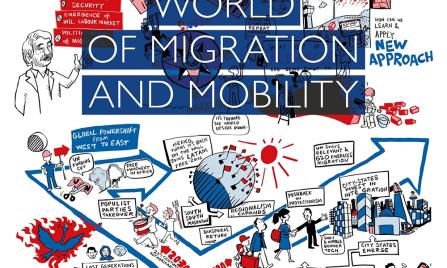-
Who we are
WHO WE AREThe International Organization for Migration (IOM) is part of the United Nations System as the leading inter-governmental organization promoting since 1951 humane and orderly migration for the benefit of all, with 175 member states and a presence in 171 countries.
-
Our Work
Our WorkAs the leading inter-governmental organization promoting since 1951 humane and orderly migration, IOM plays a key role to support the achievement of the 2030 Agenda through different areas of intervention that connect both humanitarian assistance and sustainable development.
What We Do
What We Do
Partnerships
Partnerships
Highlights
Highlights
- Where we work
-
Take Action
Take Action
Work with us
Work with us
Get involved
Get involved
- Data and Research
- 2030 Agenda
What Future for International Migration and Human Mobility? – A Joint Scenario Building Initiative
The 2017 publication “Tomorrow’s World of Migration and Mobility" is the outcome of the joint migration future scenario building initiative pursued in 2016-2017 in a partnership among IOM, the Friedrich-Ebert Stiftung and the Geneva based NGO Global Futures.
It builds on the recommendations of the 2015 IOM-CSO Annual Consultations in Geneva for IOM to continue working with civil society on exploring ‘the future of migration’, to pursue longer-term thinking on migration challenges beyond the current focus on emergencies, in recognition that simple forecasting and projections of what migration may look like in the future can be challenging and inaccurate. Four independent scenario teams were brought together including participants from civil society, academia, migrants and others drawn from different regions of the world to consider over the course of 18 months, what possible migration scenarios may arise by 2030.
The ensuing scenarios were drawn up independently through workshops, webinars and interviews with salient personalities. The publication “Tomorrow’s World of Migration and Mobility" does not intend to reflect either projections or predictions of the future, nor an ‘IOM vision’ of the future.
